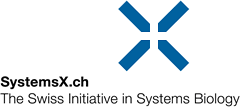SysMetEx
Systems biology of acidophile biofilms for efficient metal extraction
Biomining is a biotechnological process carried out in many parts of the world that uses acid-loving microorganisms in order to extract metals from sulphide minerals. One example of an industrial biomining method is called ‘heap bioleaching’, where minerals typically containing copper are piled into large heaps, to the top of which acid and microorganisms are added, and soluble metal is collected at the heap base. The role of the different microbes in the process is to speed up metal solubilization by oxidizing ferrous iron, thereby turning it into ferric, and removing sulphur compounds that accumulate on the mineral surface. Metals are most efficiently released from sulphide ore if the microorganisms form a thin layer, or ‘biofilm’, on the mineral surface. A crucial aspect of bioleaching is how efficiently the microbes attach to the mineral. This project will test the effect of different combinations of microorganisms and the order in which they are added on how rapidly a biofilm is formed and the copper released from the mineral. Data on the biological processes carried out by the microorganisms will be used in computer modeling to estimate the best combination and order in which to add the different types of microbes. This in turn will increase the efficiency of industrial bioleaching by reducing the time between the building of a heap and the collection of the first metals.
Project consortium coordinator: Prof. Mark Dopson, Linnaeus University, Sweden
Swiss consortium partner: Prof. Igor Pivkin, Università della Svizzera italiana

